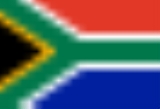
William Sage Rapson
Encyclopedia
William Sage Rapson was a New Zealand
and South Africa
n chemist.
Rapson studied at Auckland University College as a Junior University Scholar, Senior University Scholar, Duffus Lubecki Scholar and lastly Sir George Grey Scholar. In 1933 he became lecturer in chemistry at the University College. The following year he went to study organic chemistry in Oxford with Professor (later Sir) Robert Robinson. He developed the Rapson-Robinson synthesis (steroids), while completing his thesis in 1935 at the age of 23. He was then appointed lecturer in organic chemistry at the University of Cape Town
(1935 – 41).
In 1946 he became Professor designate of Chemistry after having been a Senior Lecturer. He was the first director of the National Chemical Research Laboratory of the Council for Scientific and Industrial Research
(CSIR) in Pretoria
. In 1958 he was promoted to Vice-President of CSIR. He was then appointed Research Advisor to the Transvaal and Orange Free State Chamber of Mines, later the Chamber of Mines of South Africa
. In 1978 WS Rapson wrote the book ‘Gold Usage’ in collaboration with Dr Theo Groenewald.
Gold Usage W.S. Rapson and T. Groenewald Academic Press, 1978, ISBN 0-12-581250-7.
Austin, Brian: 2001 "Schonland - Scientist and Soldier", IOPP, Bristol, ISBN 0-7503-0501-0
New Zealand
New Zealand is an island country in the south-western Pacific Ocean comprising two main landmasses and numerous smaller islands. The country is situated some east of Australia across the Tasman Sea, and roughly south of the Pacific island nations of New Caledonia, Fiji, and Tonga...
and South Africa
South Africa
The Republic of South Africa is a country in southern Africa. Located at the southern tip of Africa, it is divided into nine provinces, with of coastline on the Atlantic and Indian oceans...
n chemist.
Rapson studied at Auckland University College as a Junior University Scholar, Senior University Scholar, Duffus Lubecki Scholar and lastly Sir George Grey Scholar. In 1933 he became lecturer in chemistry at the University College. The following year he went to study organic chemistry in Oxford with Professor (later Sir) Robert Robinson. He developed the Rapson-Robinson synthesis (steroids), while completing his thesis in 1935 at the age of 23. He was then appointed lecturer in organic chemistry at the University of Cape Town
University of Cape Town
The University of Cape Town is a public research university located in Cape Town in the Western Cape province of South Africa. UCT was founded in 1829 as the South African College, and is the oldest university in South Africa and the second oldest extant university in Africa.-History:The roots of...
(1935 – 41).
In 1946 he became Professor designate of Chemistry after having been a Senior Lecturer. He was the first director of the National Chemical Research Laboratory of the Council for Scientific and Industrial Research
Council for Scientific and Industrial Research
The Council for Scientific and Industrial Research is South Africa's central and premier scientific research and development organisation. It was established by an act of parliament in 1945 and is situated on its own campus in the city of Pretoria...
(CSIR) in Pretoria
Pretoria
Pretoria is a city located in the northern part of Gauteng Province, South Africa. It is one of the country's three capital cities, serving as the executive and de facto national capital; the others are Cape Town, the legislative capital, and Bloemfontein, the judicial capital.Pretoria is...
. In 1958 he was promoted to Vice-President of CSIR. He was then appointed Research Advisor to the Transvaal and Orange Free State Chamber of Mines, later the Chamber of Mines of South Africa
South African Chamber of Mines
The Chamber of Mines is a South African mining-industry employer organisation. It was founded on 7 December 1887 in Johannesburg. Its members include famous South African mining houses such as Anglo American De Beers, Goldfields and Harmony....
. In 1978 WS Rapson wrote the book ‘Gold Usage’ in collaboration with Dr Theo Groenewald.
Works
Rapson, W. S.; Robinson, R.; J. Chem. Soc. 1935, 1285.Gold Usage W.S. Rapson and T. Groenewald Academic Press, 1978, ISBN 0-12-581250-7.
Source
Raub, C J (1999) "Appreciation: WS Rapson" Gold Bulletin 32(4).Austin, Brian: 2001 "Schonland - Scientist and Soldier", IOPP, Bristol, ISBN 0-7503-0501-0

